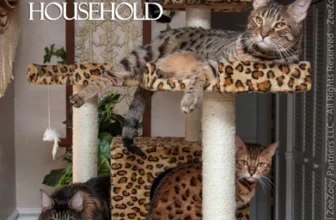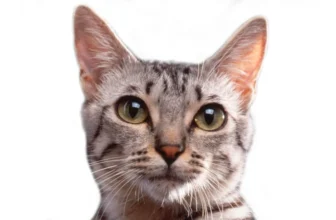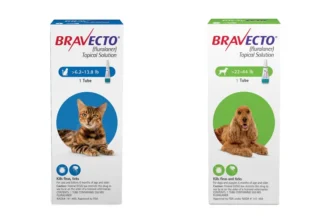As cat lovers, we cherish our feline friends and want them to enjoy long and healthy lives. However, like their human counterparts, cats can suffer from chronic health conditions, such as Chronic Kidney Disease (CKD). California Spangled Cats are no exception, and it’s important for pet owners to understand the causes, symptoms, and treatment options for CKD in this breed. This article will provide a comprehensive guide to help you recognize the signs of CKD in your California Spangled Cat and take the necessary steps to prevent or manage this disease.
Causes of Chronic Kidney Disease in California Spangled Cats
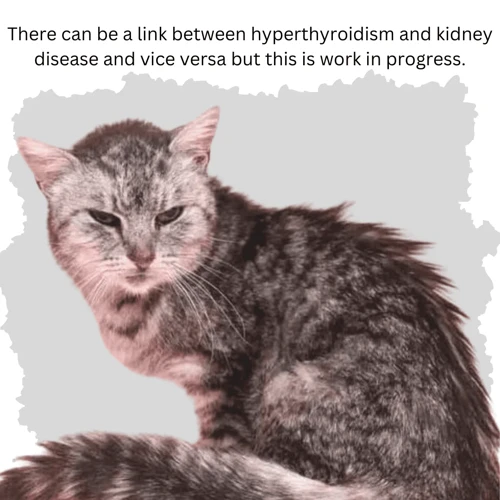
Chronic kidney disease is a common condition that affects many feline breeds, including California Spangled Cats. This disease gradually damages the kidneys, leading to a decline in their function over time. The causes of chronic kidney disease in California Spangled Cats can vary, but they often involve a combination of genetic and environmental factors. Let’s explore some of the possible causes in greater detail below.
Genetics
Chronic kidney disease in California Spangled cats can be caused by genetic factors. This breed is generally healthy, but there are some hereditary conditions that can increase the risk of developing CKD. Some of the hereditary diseases that can affect California Spangled cats include polycystic kidney disease, which causes cysts to form in the kidneys, and amyloidosis, which is the accumulation of an abnormal protein called amyloid in the kidneys. These conditions can cause kidney damage over time, which can lead to chronic kidney disease.
It’s important to note that not all California Spangled cats with these genetic markers will develop CKD, but it can increase their risk. In some cases, the development of this disease may be delayed or prevented by controlling other factors that contribute to CKD, such as diet and hydration. Regular check-ups with a veterinarian can help identify any genetic predispositions a California Spangled may have and monitor for early signs of chronic kidney disease.
Here is a table outlining some of the genetic factors that can contribute to CKD in California Spangled cats:
| Genetic Factors | Description |
| :— | :— |
| Polycystic Kidney Disease | Genetics play a role in the development of cysts in the kidney, which can lead to CKD over time. |
| Amyloidosis | Abnormal protein accumulation can cause the kidneys to become inflamed, leading to scarring and kidney damage. |
| Inherited renal disease | Certain breeds of cats, including California Spangled, may be predisposed to developing kidney disease. |
It’s important to note that genetics is just one factor that can contribute to CKD in California Spangled cats. Other factors such as diet, age, and underlying health conditions can also play a role. Addressing these other factors can help decrease the risk of developing CKD, even if a cat is genetically predisposed to the disease.
If you suspect that your California Spangled cat may be at risk for CKD due to genetic factors, talk to your veterinarian about screening tests and ways to prevent or delay the onset of the disease.
Diet
Proper diet is an essential factor in preventing and managing chronic kidney disease (CKD) in California spangled cats. The diet of a California spangled cat should be high in moisture, with ample amounts of protein and low amounts of sodium and phosphorus. A moist diet helps keep the kidneys well hydrated and reduces the workload on them. At the same time, a protein-rich diet helps in maintaining muscle mass.
Commercial cat foods are a convenient and popular choice for cat owners, but they can be high in sodium and phosphorus. It’s recommended to choose a high-quality commercial wet cat food with balanced nutrition or even better prepare food from carefully selected ingredients at home. When preparing food at home, it’s important to get the balance right and to be mindful of any additional supplements needed by your feline friend.
It’s also important to keep in mind that cats are obligate carnivores and require a specific set of nutrients, including taurine, arachidonic acid, vitamin A, and vitamin B12. These compounds are essential for proper digestion, immune function and overall well-being. The diet of a CKD cat should be custom-tailored to meet the cat’s nutritional needs.
There are also some foods that should be avoided due to their negative impact on kidney health. These include dairy products, including milk, cheese, and yogurt, as well as foods high in phosphorus like processed foods or grains. Additionally, certain foods can help prevent hairballs, promote healthy teeth, prevent UTIs, treat obesity, allergies, and skin conditions in California spangled cats.
A healthy diet is a crucial component of managing chronic kidney disease in California spangled cats. With attention to detail, a proper diet can help your cat live a comfortable life for many years to come.
Aging
As cats age, Chronic Kidney Disease (CKD) becomes more prevalent in many breeds including California Spangled Cats. As cats reach their senior years, their kidneys' efficiency decreases, making them more susceptible to CKD. However, it is important to note that CKD can occur in cats at any age.
Age-related changes in the kidneys can cause them to become less efficient at filtering waste out of the blood. This can lead to a build-up of toxins and waste products that can cause damage to the kidneys over time, ultimately leading to CKD.
In addition to decreased kidney function, aging can also lead to other health issues that can contribute to the development of CKD. For example, older cats may be more likely to suffer from high blood pressure or other underlying health conditions that can damage the kidneys.
It is important for pet owners to be aware of the increased risk of CKD as their California Spangled Cat ages. Regular vet checkups can help catch the disease early on, allowing for earlier intervention and a better chance at managing the condition. Additionally, implementing preventative measures such as a healthy diet, proper hydration, and control of underlying health conditions can help minimize the risk of CKD in aging California Spangled Cats.
Internal Link: Regular vet checkups are crucial in identifying any health issues your senior California Spangled Cat may be experiencing.
Symptoms of Chronic Kidney Disease in California Spangled Cats
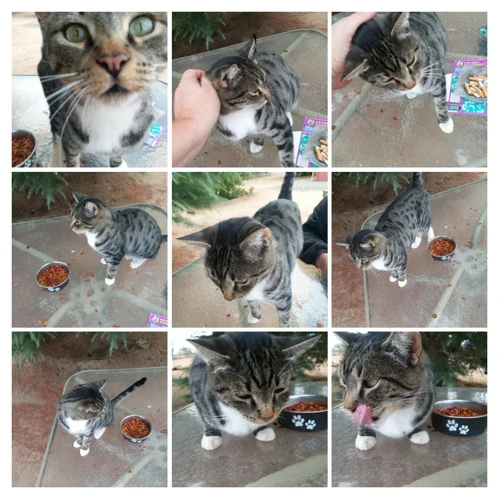
As chronic kidney disease progresses in California Spangled Cats, they may exhibit a range of symptoms. Unfortunately, in the early stages of the disease, these symptoms may not be noticeable. However, as the disease progresses, various changes in behavior and physical appearance may become apparent. Owners may notice an increase in thirst and urination or weight loss. Other symptoms may include a poor coat condition and anemia. If you notice any of these symptoms in your beloved California Spangled Cat, it’s essential to take them to the vet for proper treatment.
Polydipsia and Polyuria
One of the common symptoms of chronic kidney disease in California Spangled Cats is polydipsia and polyuria. Polydipsia refers to increased thirst, while polyuria refers to increased urination. Your cat may begin to drink an excessive amount of water and need to urinate frequently. This is because the kidneys are not functioning properly and are unable to concentrate urine. As a result, more water is needed to remove waste products from the body.
It’s important to note that polydipsia and polyuria can be symptoms of other health conditions as well, so it’s important to take your cat to the vet for a proper diagnosis. In some cases, it may be an indication of a urinary tract infection, which can be treated with antibiotics. On the other hand, if it is a result of chronic kidney disease, it will require a different course of treatment.
If your California Spangled Cat exhibits these symptoms, it’s crucial to take them to the vet for a thorough medical examination. Depending on the underlying cause, treatment options may vary. For instance, a healthy diet and proper hydration may help reduce the severity of these symptoms, which can be managed with appropriate medications.
Preventative measures such as regular visits to the vet, controlling underlying health conditions, and reducing stress can help reduce the risk of developing chronic kidney disease and associated symptoms such as polydipsia and polyuria. Conversely, ignoring these symptoms or delaying treatment can be detrimental to your cat’s overall health and well-being.
If you want to learn more about other common health issues that may affect California Spangled Cats, check out our articles on hairballs, dental hygiene, urinary tract infections, obesity, allergies, stress, and skin conditions.
Weight Loss
Weight loss is one of the most common symptoms of chronic kidney disease in California Spangled cats. As the disease progresses, cats may experience a loss of appetite and a decrease in food intake, which can lead to weight loss. Kidney disease can cause muscle wasting, contributing to a cat’s weight loss.
If you notice your California Spangled cat losing weight, it’s important to take action immediately. Schedule a veterinary visit to determine the underlying cause of the weight loss. The vet will perform various tests, including blood work and urinalysis, to check for kidney disease.
If left untreated, weight loss can worsen the cat’s condition and lead to further complications. Your vet may recommend a dietary change or fluid therapy to help manage the weight loss and maintain the cat’s health. It’s crucial to follow your vet’s recommendations carefully for the best results.
You can take proactive measures at home to help prevent weight loss and complications related to kidney disease. Encourage your cat to drink plenty of water to stay hydrated and maintain a healthy weight. Consider incorporating low-protein, high-carbohydrate foods into their diet, as this can help minimize the strain on their kidneys.
Weight loss is a serious symptom of chronic kidney disease in California Spangled cats. If you notice any changes in your cat’s weight, seek veterinary care immediately to determine the underlying cause and receive appropriate treatment.
Poor Coat Condition
California Spangled cats with chronic kidney disease can often exhibit a poor coat condition. This may manifest as a rough, dull, or unkempt coat, or even hair loss. The reason for this is that kidney disease interferes with the body’s ability to eliminate toxins and waste products, leading to an increase in toxin levels in the bloodstream. These toxins can damage the hair follicles, resulting in hair loss and a poor coat condition.
Additionally, cats with chronic kidney disease may experience dehydration, which can cause the skin to become dry and flaky. Dehydrated cats may also experience a loss of body fat, which can leave them looking gaunt and further exacerbate their poor coat condition.
To improve the coat condition of cats with chronic kidney disease, it’s important to address the underlying kidney disease. However, there are also some steps that can be taken to help alleviate the symptoms of a poor coat. These include:
- Regular grooming: Brushing your California Spangled cat’s coat regularly can help to stimulate blood flow and distribute oils throughout the coat, promoting a healthier, shinier coat.
- Supplementing their diet: Feeding your cat a diet that’s rich in the nutrients they need can help to support healthy skin and coat growth. Omega-3 fatty acids, for example, are known to promote healthy coat growth and can be found in oily fish such as salmon or in supplement form.
- Providing a humidifier: Providing a humidifier in your cat’s living area can help to alleviate dry skin and promote a more hydrated coat.
It’s important to note that while these steps may help to alleviate the symptoms of a poor coat condition, they are not a substitute for proper treatment of chronic kidney disease. If your California Spangled cat is experiencing a poor coat condition or other symptoms of kidney disease, it’s important to seek veterinary care as soon as possible to ensure the best possible outcome for your furry companion.
Anemia
Anemia, or a decrease in red blood cells, is a common symptom of chronic kidney disease in California Spangled Cats. The kidneys play a crucial role in producing a hormone called erythropoietin, which stimulates the bone marrow to produce red blood cells. When the kidneys are not functioning properly, they may not produce enough erythropoietin, leading to anemia.
Symptoms of anemia in cats can include fatigue, weakness, pale gums, and rapid breathing. It is important to diagnose anemia in cats with chronic kidney disease, as it can exacerbate other symptoms and make the condition more difficult to manage.
A blood test called a complete blood count (CBC) can be used to diagnose anemia in cats. This test measures the number and size of the red blood cells in the blood. If the red blood cell count is low, and the cells are smaller than normal, this indicates anemia.
Treatment for anemia in cats with chronic kidney disease may include administering erythropoietin injections, iron supplements, or blood transfusions, depending on the severity of the anemia. It is important to work closely with a veterinarian to determine the best treatment plan for the individual cat.
If left untreated, anemia can lead to other complications, such as heart disease and organ damage. Early diagnosis and treatment is crucial in managing both the anemia and the underlying chronic kidney disease in California Spangled Cats.
| Symptoms of Anemia in Cats | Diagnosis of Anemia in Cats | Treatment for Anemia in Cats |
|---|---|---|
| Fatigue | Complete Blood Count (CBC) Test | Erythropoietin Injections |
| Weakness | Low Red Blood Cell Count | Iron Supplements |
| Pale Gums | Small Red Blood Cells | Blood Transfusions |
| Rapid Breathing |
Diagnosing Chronic Kidney Disease in California Spangled Cats
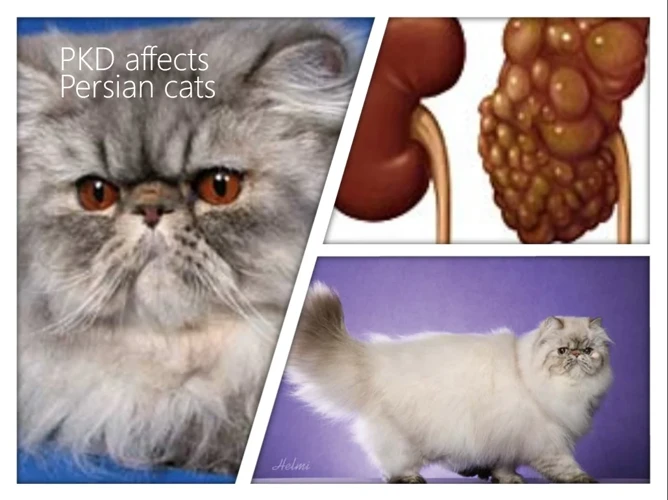
One of the most important steps in managing chronic kidney disease in California Spangled Cats is diagnosing the condition early. The earlier the disease is detected, the better the chances of slowing its progression and extending the cat’s life. However, symptoms of chronic kidney disease can be subtle, so diagnosis requires a combination of tests and evaluations. Let’s take a closer look at the diagnostic process for this condition.
Blood Tests
Blood tests are a crucial tool for the diagnosis of chronic kidney disease (CKD) in California Spangled Cats. The tests help to evaluate the level of kidney function in a cat and determine whether the cat is suffering from CKD. There are several blood tests that a veterinarian may perform, including:
- Blood Urea Nitrogen (BUN) Test: This test measures the amount of urea nitrogen in the blood. Elevated levels of BUN may indicate that the kidneys are not excreting waste products properly.
- Creatinine Test: Creatinine is a waste product that is produced by muscles and excreted by the kidneys. Elevated levels of creatinine may also indicate poor kidney function.
- Complete Blood Count (CBC): A CBC measures the number of red blood cells, white blood cells, and platelets in the blood. Cats with CKD may have anemia and a low red blood cell count.
- Electrolyte Test: This test measures the levels of electrolytes in the blood, such as sodium, potassium, and chloride. Cats with CKD may have abnormal levels of electrolytes due to poor kidney function.
- Urinalysis: While not a blood test, a urinalysis can provide important information about kidney function. It can evaluate urine concentration, pH, and the presence of protein or blood in the urine.
It is important to note that blood tests alone cannot provide a definitive diagnosis of CKD. The results must be interpreted in conjunction with other diagnostic tests, such as urine tests and imaging studies. If your California Spangled Cat is exhibiting symptoms of CKD, including increased thirst and urination, weight loss, and poor coat condition, it is important to schedule a veterinary appointment for a full evaluation including blood tests. The earlier that CKD is detected and treated, the better the outcome for your feline companion.
Urine Tests
One of the most common methods used to diagnose chronic kidney disease (CKD) in California Spangled cats is urine testing. This test can be used to determine the amount of protein present in their urine, as high levels can indicate damage to the kidneys. The urine test can also detect the presence of blood in the urine, which can be a sign of kidney damage.
There are several types of urine tests that can be performed on your cat. These include the dipstick test, urine sediment exam, and urine protein-to-creatinine ratio (UPC) test.
The dipstick test is a simple and quick test that can be performed in the vet’s office. A special strip is dipped into the urine sample, and the colors that appear on the strip can indicate the presence of certain substances in the urine. Elevated levels of protein in the urine can be an early sign of CKD, and the dipstick test can be used to detect this.
The urine sediment exam involves looking at a sample of your cat’s urine under a microscope. This allows the vet to see if there are any abnormal cells or substances present in the urine. Elevated levels of red or white blood cells or crystals in the urine can be a sign of CKD.
The UPC test is a more comprehensive test that measures the amount of protein and creatinine in your cat’s urine. A high UPC ratio can indicate that your cat’s kidneys are not functioning properly. This test can also be used to monitor the progression of CKD and the effectiveness of treatment.
In order for the urine test results to be accurate, it is important to collect a clean urine sample. Your vet may give you special instructions on how to collect the sample at home. They may also suggest that you bring your cat in for a urine sample to be collected at the clinic.
It is important to note that elevated levels of protein in the urine can also be caused by other health conditions, such as urinary tract infections. Additional tests may be needed to confirm a diagnosis of CKD.
Regular urine testing is an important part of monitoring the health of your California Spangled cat, especially if they are at risk of developing CKD. An early diagnosis can lead to more effective treatment and a better outcome for your furry friend.
Imaging Tests
Imaging tests are often used to aid in the diagnosis of chronic kidney disease in California Spangled Cats, and can provide valuable information about the condition of the kidneys. These tests may include ultrasound, X-ray, or CT scans. Ultrasound is a non-invasive imaging test that uses sound waves to create images of the internal organs. This can be helpful in identifying any abnormalities in the size or shape of the kidneys.
X-rays are another type of imaging test that can be used to diagnose chronic kidney disease. This procedure sends a beam of radiation through the body to create an image on film or a digital sensor. X-rays can help identify any structural abnormalities in the kidneys, such as kidney stones or tumors.
CT scans, also known as computed tomography scans, are a type of imaging test that use a series of X-ray images to create a three-dimensional image of the kidneys. This can help diagnose any complications associated with chronic kidney disease, such as infections or bleeding.
It’s important to note that imaging tests alone cannot definitively diagnose chronic kidney disease in California Spangled Cats. These tests are often used in conjunction with other diagnostic tools, such as blood and urine tests. Your veterinarian will determine which imaging tests are most appropriate for your cat based on their individual symptoms and medical history.
| Imaging Test | Advantages | Disadvantages |
|---|---|---|
| Ultrasound | Non-invasive, painless, and radiation-free | May not provide a detailed enough image for diagnosis, can be affected by fur or gas in the intestines |
| X-ray | Readily available, relatively inexpensive | Provides limited information about kidney function, exposes pet to radiation |
| CT scan | Provides detailed 3D images of the kidneys and surrounding structures | Expensive, requires anesthesia, exposes pet to radiation |
Imaging tests can be a valuable tool in diagnosing chronic kidney disease in California Spangled Cats. However, it’s important to discuss the benefits and risks of these procedures with your veterinarian to determine the best course of action for your furry friend.
Treatment Options for Chronic Kidney Disease in California Spangled Cats
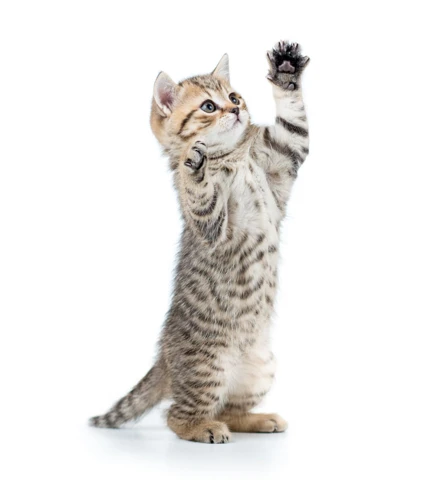
Dealing with chronic kidney disease in California Spangled cats requires timely intervention and careful management. Fortunately, there are several treatment options that can help improve the quality of life of affected cats and slow the progression of the disease. Treatment plans are often tailored to address each cat’s unique needs and may include a combination of dietary changes, fluid therapy, medications, and subcutaneous fluids. Let’s take a closer look at each of these options and how they can benefit cats with chronic kidney disease.
Dietary Changes
Chronic kidney disease can be a devastating diagnosis for California Spangled cats and their owners, but with the right dietary changes, the progression of the disease can be slowed down. Cats with kidney disease need to consume food with low levels of phosphorus and protein. Foods that are high in these nutrients can cause further damage to the kidneys and worsen the cat’s condition.
Phosphorus Restriction
Phosphorus is a mineral that is found in high amounts in many food sources. However, cats with chronic kidney disease cannot process phosphorus properly, so it’s important to limit their phosphorus intake. This can be done by feeding special prescription diets that have lower amounts of phosphorus than regular cat food. Below is a table of some example foods that are low in phosphorus:
| Food | Phosphorus Levels |
|---|---|
| Boiled chicken breast | 90mg per 100g |
| Steamed fish | 60mg per 100g |
| Low-phosphorus prescription cat food | 0.3-0.8% on a dry matter basis |
Protein Restriction
Restricting protein intake can also help cats with chronic kidney disease. When protein is digested, it produces waste products that the kidneys must filter out. For cats with kidney disease, this can be taxing on their already-weakened kidneys. However, it’s important to maintain a healthy level of protein to prevent weight loss and muscle wasting. Your vet can recommend a proper amount of protein for your cat’s specific needs.
Other Considerations
In addition to phosphorus and protein restrictions, there are other dietary changes that can help cats with chronic kidney disease. Adding more water to the diet can help prevent dehydration and aid in flushing out toxins from the body. This can be done by feeding wet food, adding water to dry food, or providing a separate water dish.
It’s important to consult with your veterinarian before making any dietary changes for your cat. They can recommend specific prescription diets that are appropriate for your cat’s stage of kidney disease. With the right dietary changes and proper monitoring, cats with chronic kidney disease can live happy, healthy lives.
Fluid Therapy
Fluid therapy is an essential aspect of treating chronic kidney disease in California Spangled cats. The goal of fluid therapy is to help support and improve kidney function, as well as reduce the severity of symptoms associated with the disease.
What is Fluid Therapy?
Fluid therapy involves administering fluids to a cat either by mouth or through an IV. The fluids are specifically formulated to help support kidney function and improve hydration.
How Does Fluid Therapy Help?
Fluid therapy can help to flush out toxins that may be present in the cat’s blood and relieve some of the stress on the kidneys. It can also help to treat dehydration, which is a common symptom of chronic kidney disease. Proper hydration is essential for maintaining overall health and improving kidney function.
To give you a better understanding of fluid therapy, here’s a breakdown of some of the key benefits and considerations:
| Benefits of Fluid Therapy | Considerations for Fluid Therapy |
|---|---|
| Improves hydration levels | May require frequent vet visits for administration |
| Flushes toxins out of the body | Can be costly |
| Supports kidney function | May require dietary adjustments |
Types of Fluid Therapy
There are a few different types of fluid therapy that may be used to support cats with chronic kidney disease:
- Subcutaneous Fluids: Fluids are administered under the skin using a needle and syringe. This can be done at home or in a vet’s office.
- Intravenous Fluids: Fluids are administered directly into the bloodstream through a catheter. This is typically done in a vet’s office and requires close monitoring.
- Oral Rehydration Solutions: A liquid solution is given by mouth to help improve hydration levels.
Conclusion
Fluid therapy is an essential part of the treatment plan for cats with chronic kidney disease. It can help to improve hydration levels, flush out toxins, and support kidney function. However, it’s important to work closely with your vet to determine the best course of treatment for your California Spangled cat and to monitor their progress regularly.
Medications
When it comes to treating chronic kidney disease in California Spangled Cats, medications can play a vital role. Depending on the severity of the disease, your veterinarian may prescribe different medications to help manage symptoms, slow the progression of the disease, and improve your cat’s quality of life.
Here are some common medications that may be prescribed for California Spangled Cats suffering from chronic kidney disease:
| Medication Name | Function |
|---|---|
| Ace Inhibitors | This medication can help lower blood pressure and reduce protein loss in the urine, which can slow the progression of the disease. |
| Phosphate Binders | High levels of phosphorus in the blood can worsen chronic kidney disease, so phosphate binders may be prescribed to help lower these levels and improve kidney function. |
| Potassium Supplements | Chronic kidney disease can cause low potassium levels in the blood, which can be dangerous for your cat. Potassium supplements can help maintain normal levels of this essential mineral. |
| Vitamin B Supplements | Cats with chronic kidney disease often have low levels of vitamin B, which can lead to anemia. Vitamin B supplements can help improve red blood cell production and prevent anemia. |
| Anti-Nausea Medications | Many cats with chronic kidney disease experience nausea and vomiting, which can make it difficult for them to eat and maintain proper nutrition. Anti-nausea medications can help manage these symptoms and improve quality of life. |
It is important to follow your veterinarian’s instructions carefully when administering medications to your California Spangled Cat. Some medications may have side effects or interactions with other medications, and it is important to monitor your cat’s response to treatment.
Remember that medications are just one part of a comprehensive treatment plan for chronic kidney disease in cats. Dietary changes, fluid therapy, and regular checkups with your veterinarian are also important components of managing this disease.
Subcutaneous Fluids
One of the main treatment options for chronic kidney disease in California Spangled Cats is subcutaneous fluids. This treatment involves injecting fluids under the cat’s skin to keep them hydrated and maintain their electrolyte balance.
Here are some key points to keep in mind:
- The fluids used in this treatment are typically a mixture of electrolytes, such as sodium and potassium, along with water.
- The fluids are injected under the skin, typically around the shoulder blades or behind the neck, and are absorbed into the bloodstream over a period of several hours.
- This treatment can be done at home with guidance from a veterinarian.
- Subcutaneous fluids can help improve a cat’s energy levels, coat condition, and overall quality of life.
- It’s essential to follow the veterinarian’s instructions carefully and monitor the cat’s response to the treatment.
While subcutaneous fluids can be an effective treatment for chronic kidney disease, it’s important to note that it’s not a cure. This treatment is designed to manage the symptoms and slow down the progression of the disease. In addition to subcutaneous fluids, cats with chronic kidney disease may also need a special diet, medications, and other supportive care to manage their condition and improve their quality of life.
If you suspect your California Spangled Cat has chronic kidney disease or any other health problem, it’s essential to seek veterinary care as soon as possible. Early detection and treatment are key to managing the disease and preserving your cat’s health.
Prevention of Chronic Kidney Disease in California Spangled Cats
As a loving cat owner, you want to ensure that your feline companion is healthy and happy. One way to do that is by taking preventive measures against chronic kidney disease. California Spangled cats are particularly prone to this condition and it’s crucial to take steps to reduce its likelihood. Fortunately, there are several things you can do to help your California Spangled cat stay healthy and avoid chronic kidney disease. In this section, we will discuss some effective prevention strategies available to cat owners. So, buckle up and let’s explore!
Annual Vet Visits
Regular veterinary check-ups are essential for keeping your California Spangled cat healthy and for detecting any health issues, such as chronic kidney disease, early on. Annual vet visits should be scheduled to ensure your cat receives preventative care and timely treatment for any underlying health conditions.
During the annual visit, the vet will conduct a comprehensive physical examination of your cat, which includes checking the weight, temperature, heart and lung function, and overall health. The vet may also ask you about any changes in your cat’s behavior or habits and discuss any health concerns you may have.
Benefits of Annual Vet Visits for Chronic Kidney Disease:
Regular veterinary check-ups can help to prevent and/or manage chronic kidney disease in California Spangled cats. Here are some of the benefits of annual vet visits:
| Benefits |
|---|
| Early detection and diagnosis of chronic kidney disease |
| Preventative care measures can be put in place to slow down the progression of the disease |
| Veterinarian can monitor the cat’s kidney function through regular blood and urine tests |
| Changes in diet and medication management can be discussed and implemented if necessary |
| Underlying health conditions, which may contribute to the development of chronic kidney disease, can be identified and managed |
| The vet can provide you with helpful tips and tricks for maintaining your cat’s health and preventing future health issues |
Annual vet visits are a crucial aspect of maintaining your California Spangled cat’s health and preventing or managing chronic kidney disease. Make sure to schedule regular check-ups with your vet and discuss any concerns you may have about your cat’s health.
Proper Diet and Hydration
One of the most important ways to prevent chronic kidney disease in California Spangled cats is by maintaining a proper diet and hydration. This can be achieved by ensuring that your cat has access to clean and fresh water at all times. You can also introduce wet food to their diet as it has a higher water content than dry food. Consult with your veterinarian to ensure that your cat is on a healthy and balanced diet that includes all the necessary nutrients for their wellbeing.
To help you understand better, below is a table of foods that are good sources of essential nutrients for your cat’s kidney health:
| Food | Nutrient |
|---|---|
| Salmon | Omega-3 fatty acids |
| Egg Whites | Protein |
| Sweet Potato | Antioxidants and Fiber |
| Red Bell Peppers | Vitamin C and Potassium |
| Chicken | Protein and B Vitamins |
It is essential to note that while a healthy diet is crucial, your cat’s hydration is equally important. Dehydration can have devastating effects on your cat’s kidneys. Make sure that your cat has access to clean drinking water at all times. You can also try introducing water fountains and various flavors of water to increase their water intake.
In addition to a healthy diet and hydration, it is essential to monitor your cat’s weight. Obesity can cause an increase in blood pressure, which can put a strain on your cat’s kidneys. Encourage your cat to stay active and exercise regularly.
By following these simple measures of maintaining a healthy diet and hydration, you can prevent chronic kidney disease in California Spangled cats and ensure that they lead a long and healthy life.
Control of Underlying Health Conditions
Just like with humans, it’s crucial to manage any underlying health conditions present in California Spangled Cats as a way of preventing chronic kidney disease. High blood pressure, diabetes, urinary tract infections and renal stones are some of the health conditions that can lead to chronic kidney disease. Make sure that your cat receives appropriate care for any existing medical condition. It’s essential to adhere to vet-recommended treatment and medication programs if your cat is diagnosed with any of these illnesses. Consistent monitoring of their health will help dismiss the progression of the disease.
Additionally, you can prevent the onset of these health conditions by providing your cat with a well-balanced diet. The food should contain all nutrition components required by their bodies, including minerals and vitamins. Make sure to provide fresh water regularly to keep them hydrated. If you’re not sure about which brand of cat food would be best for your cat, consult with your veterinarian.
Another way to prevent underlying health conditions is through regular exercise. Encourage your cat to play by giving them toys and keeping them active. This helps maintain their ideal weight and decreases the risk of developing diabetes and obesity, among other conditions that can lead to chronic kidney disease.
Preventing underlying health conditions in California Spangled Cats can reduce the risk of chronic kidney disease. Ensure that they receive proper care and treatment for existing conditions and maintain healthy diets and hydration. A healthy lifestyle including regular exercise can go a long way in preventing these health conditions.
Conclusion
After understanding chronic kidney disease (CKD) in California Spangled cats, it is important to take the necessary steps to prevent and manage this condition. CKD can be caused by genetics, diet, and aging, but early detection through regular vet visits and monitoring of symptoms can lead to better treatment outcomes.
Symptoms of CKD in California Spangled cats include increased thirst and urination, weight loss, poor coat condition, and anemia. If these symptoms are present, it is important to schedule a vet appointment and discuss potential diagnosis and treatment options.
Diagnosis of CKD typically involves blood tests, urine tests, and imaging tests to assess the cat’s kidney function and identify any underlying conditions. Treatment options may include changes to the cat’s diet and fluid intake, medications, and subcutaneous fluids administered at home.
Preventing CKD in California Spangled cats involves annual vet visits, proper diet and hydration, and control of underlying health conditions. A balanced diet with appropriate hydration is crucial in maintaining kidney health.
In conclusion, while managing CKD in California Spangled cats can be a challenging task, early detection and monitoring of symptoms can lead to a better quality of life for the cat. Preventative measures such as regular vet visits and a balanced diet can also go a long way in maintaining kidney health and preventing CKD. It is important to work with a trusted veterinarian to develop a personalized treatment plan for each individual cat.
Frequently Asked Questions
Can California Spangled Cats be genetically predisposed to Chronic Kidney Disease?
Yes, some breeds, including California Spangled Cats, have a higher likelihood of developing Chronic Kidney Disease due to genetic factors.
What role does diet play in the development of Chronic Kidney Disease in California Spangled Cats?
Diet is a significant factor in the development of Chronic Kidney Disease in California Spangled Cats. High phosphorus diets, for example, can worsen the condition.
How can I tell if my California Spangled Cat has Chronic Kidney Disease?
Some common signs include excessive thirst and urination, weight loss, poor coat condition, and anemia. If you suspect your cat has Chronic Kidney Disease, it’s important to see a veterinarian for a proper diagnosis.
What tests are typically used to diagnose Chronic Kidney Disease in California Spangled Cats?
Blood and urine tests, as well as imaging tests like ultrasounds, are often used to diagnose Chronic Kidney Disease in California Spangled Cats.
Can Chronic Kidney Disease in California Spangled Cats be cured?
Unfortunately, Chronic Kidney Disease cannot be cured. But there are a variety of treatment options available to help manage the condition and improve your cat’s quality of life.
What dietary changes can help manage Chronic Kidney Disease in California Spangled Cats?
Restricting phosphorus in your cat’s diet and switching to a kidney-friendly prescription food can help manage Chronic Kidney Disease in California Spangled Cats.
What is subcutaneous fluids therapy, and how is it used to treat Chronic Kidney Disease in California Spangled Cats?
Subcutaneous fluids therapy involves administering fluids beneath the skin using a needle. This can help manage dehydration and improve your California Spangled Cat’s quality of life.
Can Chronic Kidney Disease in California Spangled Cats be prevented?
While Chronic Kidney Disease cannot be prevented entirely, annual vet visits, proper diet and hydration, and controlling underlying health conditions can help reduce the likelihood of developing the condition.
How does aging affect the development of Chronic Kidney Disease in California Spangled Cats?
As with humans, aging is a factor that can increase the risk of developing Chronic Kidney Disease in California Spangled Cats. Regular vet checkups are crucial for early detection and management of the condition.
What medication options are available to manage Chronic Kidney Disease in California Spangled Cats?
Medications like ACE inhibitors and phosphate binders are often used to manage the symptoms of Chronic Kidney Disease in California Spangled Cats.





